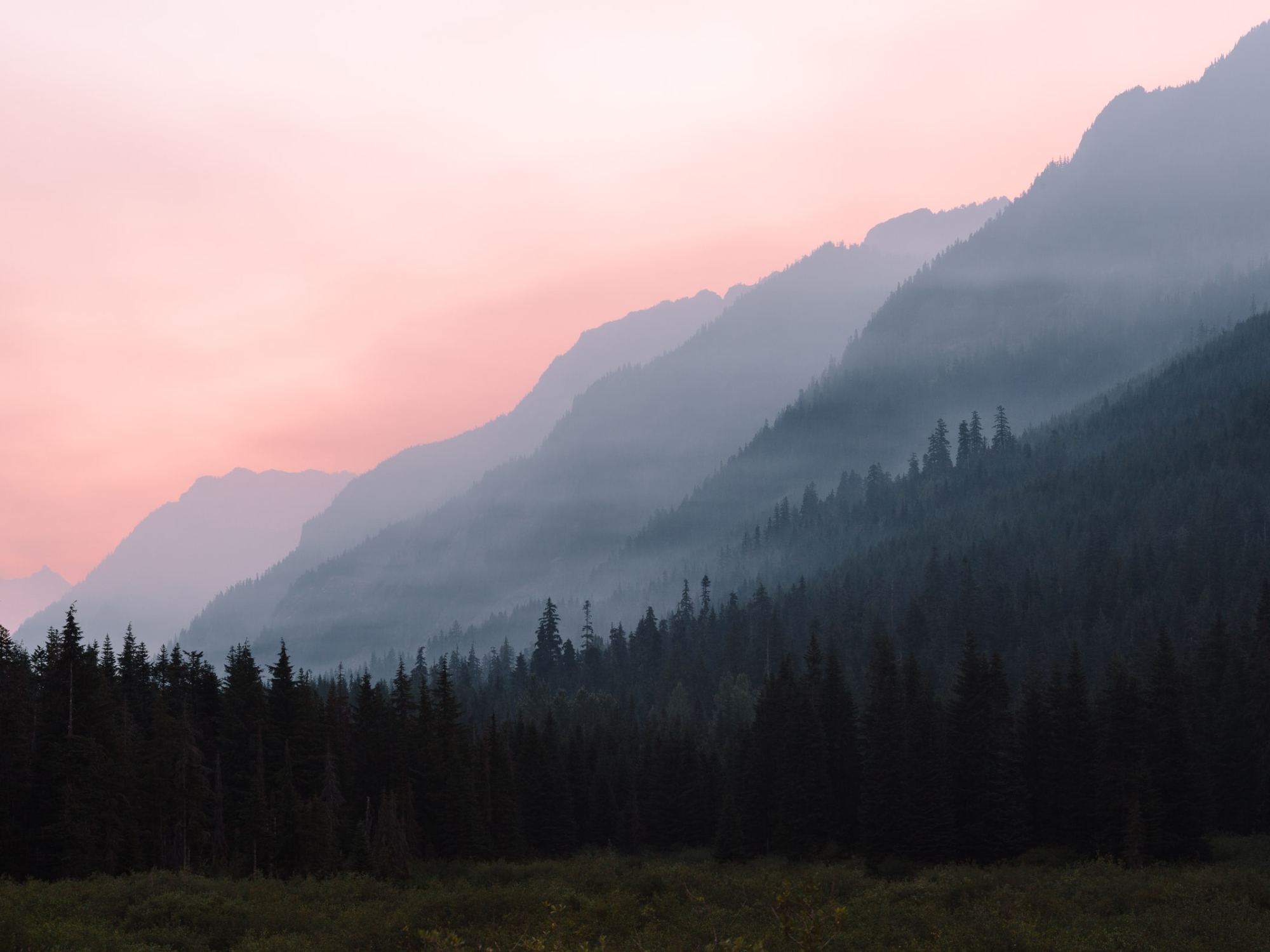

Wildfires are an annual occurrence along the West Coast, igniting anywhere from Alaska down to southern California. But both the intensity and length of fire season have grown in recent years, driven in part by the drought conditions and high temperatures of an ever-warming planet.
And even if you live nowhere near the Pacific, or anywhere else that’s burning, you can still feel the effects of wildfires hundreds of miles away: hazy conditions and air quality alerts have descended on the Midwest and reached as far as the East Coast. It may be the first time your local weather has suffered as a result of fires happening somewhere else—but it won’t be the last. That’s why it’s crucial that you understand when to worry about wildfire haze, and what you can do to protect yourself and your loved ones.
Check air quality
Depending on where you live, the sky might have taken on an orange tint in recent days. This is due to extremely diffuse wildfire smoke: the result of winds in the upper atmosphere blowing tiny burnt particles across the continent.
“Small particles in the air can travel hundreds of miles,” says Zab Mosenifar, medical director for the Women’s Guild Lung Institute at Cedars-Sinai Medical Center in Los Angeles. “While the immediate danger is within a 25-mile radius of a fire—depending on the winds—particles travel and float in the air for up to two weeks after the fire is out.”
These ultrafine particles of burnt organic matter are too small to see with the naked eye, but can still cause hazy conditions and lower the air quality far from the fire itself. To check the air quality in your area, enter your zip code, city, or state into the search bar on the front page of AirNow. This data-focused site is a partnership involving numerous federal, tribal, state, and local government agencies, and uses sensors around the country to provide accurate and up-to-date information about the cleanliness of your local air. The site also offers general recommendations for what to do if the air quality index (AQI) at your location is dangerously high, so make sure to follow them, as well as any other instructions from local authorities.
Follow some general smog advice
If you’re not used to seeing your location’s AQI reach unhealthy orange alert level, these conditions can feel alarming. At this point, members of vulnerable groups, such as children, the elderly, and people with asthma and other respiratory conditions may want to stay inside. But for most low-risk people, your outdoor air will be safe to breathe in moderation.
“For the vast majority of people… it’s more annoying than life-threatening,” says Clayton Cowl, a pulmonologist and preventive medicine specialist at the Mayo Clinic in Rochester, Minnesota. “Simply walking outside and doing what we normally do, for the average person probably isn’t going to be a big deal.”
[Related: Living in the same city doesn’t mean breathing the same air]
This means that if you aren’t a member of a high-risk group, you don’t need to postpone going to the grocery store, walking your dog, and other day-to-day activities at the slightest sign of smog. The human body has a natural filtration system that protects our lungs from dust and debris every day.
“We all have a little bit of nose hair, and there’s mucus in the upper airway that dust sticks to like a fly would to flypaper,” says Cowl. “The problem with the very small particles is that they can bypass those normal mechanisms and you tend to inhale those particular particles deeper into the lungs.”
The key, therefore, is avoiding strenuous outdoor activities and using a few common-sense tips to keep your exposure to particles low. This is especially important for members of vulnerable groups.
As the AirNow dial points farther to the right, into the red, purple, and maroon levels, even people who have a low risk of being affected might want to stay indoors. If the world looks hazy through your window, make sure you check AQI levels and stay up to date with the information and recommendations from local authorities before stepping outside.
What to do when air quality worsens
- Complete necessary chores and activities as normal.
- Make sure your home and car windows stay closed, and use a recirculating air system if you have one. This will help keep airborne particles away from your breathing space.
- Keep your pets indoors when possible. “Animals, especially dogs, can have an even stronger reaction to smoky air than humans,” Mosenifar says.
- Continue to use medication, including your inhaler, as recommended by your doctor.
- Monitor local air quality by paying attention to local alerts and nationwide statistics.
What not to do when the air quality is bad
- Don’t contribute to poor air quality by burning candles, cooking over campfires, or incinerating lawn waste inside or outside of your home. In Cowl’s words, “every little bit does count.”
- Avoid riding your bike to work or doing any strenuous outdoor exercise while your local air quality is in the “moderate” (yellow) category or worse.
- Most cloth and paper masks, even those that fit well, are not designed to protect you from the ultrafine particles in wildfire smoke. Still, N95 respirators and tight-fitting KN95s could still be useful if you have to be outside for a prolonged period of time, or if you don’t feel comfortable not covering your face.
- Resist dropping big money on an expensive air filtration system. Smoky conditions will improve with a little time, wind, and precipitation.
- Don’t ignore the leading causes of wildfires: human actions and a warming climate. Look into how you can help fight these trends by practicing fire safety and working to combat the climate crisis.
This story has been updated. It was originally published on July 26, 2021.
